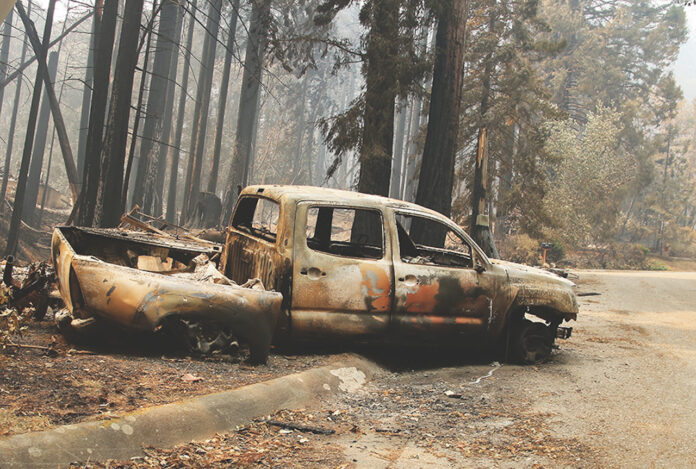
As we move into November, there is a lot of progress being made on supporting recovery from the CZU Lightning Complex fires—preparing residents to rebuild and protecting the community at-large from the likely hazard of debris flows.
Crews working for the Environmental Protection Agency have removed hazardous waste, known as Phase 1 work, from nearly 85 percent of parcels impacted by the fire. After Phase 1 has been completed on a property, owners can move into Phase 2, which is the removal of non-toxic debris, including vehicles.
Property owners can participate in a government-funded Phase 2 process or hire a private contractor with County approval. We hope Phase 2 will begin within about a month, but details are still being developed. You can keep up to date by visiting the County’s Fire Recovery website, santacruzcounty.us/firerecovery, under the heading Debris Removal.
Cleaning up as quickly and safely as possible will reduce risks. As many of you have likely heard, the County is gravely concerned about the potential for debris flows similar to those that took place after a wildfire in Santa Barbara County in 2018, leading to 23 deaths. These fast-moving flows can happen when an intense rain event loosens the topsoil damaged by fire, sending mud, boulders and other material into structures and vehicles in its path.
In order to ensure the timely removal of debris, the Board of Supervisors on Oct. 20 approved an urgency ordinance establishing a timeline and other regulations. County and state officials are looking at minor mitigations where possible but believe evacuation is the best tool for survival. They have been working on an evacuation map defined by zones, and once it is released, residents are encouraged to memorize their zone and evacuate when ordered. Even those living in areas not considered to be high-risk for flows due to their distance from burned areas may be ordered to evacuate out of an abundance of caution. The County will be announcing several shelter sites for residents to use if evacuated.
In terms of financial support, I want to thank FEMA for extending to Nov. 23 the application deadline for individuals directly impacted by the fire to seek an array of disaster assistance, which includes temporary housing costs, personal property losses and home repair. The Small Business Administration also offers low-interest loans to property owners.
The County has spent an estimated $8.3 million to date responding to the fire and working on recovery, with about $7.1 million of those expenses reimbursed by FEMA and the California Office of Emergency Services. The Board of Supervisors approved drawing down our contingency reserves, those set aside for emergencies like the fire, by $1.2 million to cover the gap. I want to thank my colleagues and our County Administrative Office for building up those reserves over the last several years and using them judiciously so they would be available for times like these.
Lastly, we know those suffering the biggest financial hardships are our residents. We can report that property tax reassessments are likely to reduce their financial burden. While annual tax bills have already gone out based on property values assessed effective Jan. 1, the County Assessor’s Office is reassessing all properties damaged by the fire. Affected property owners will receive or may have already received a Notice of Supplemental Assessment letter, and eventually will see a reduction in tax based on the new property value. More information is available on the Assessor’s page on the County’s website.
Looking ahead, the Board is expected to approve a contract on Nov. 10 with a consulting firm to process and streamline rebuilding permits. This is an important investment to increase our capacity for helping property owners complete the process as quickly and efficiently as possible. We anticipate the firm will be working with the County for at least two years.
Bruce McPherson is the Fifth District Supervisor for the County of Santa Cruz, including the San Lorenzo Valley and parts of the cities of Santa Cruz and Scotts Valley. McPherson previously served as California’s Secretary of State and two terms each in the California Assembly and Senate. His views are his own and not necessarily those of the Press Banner.











